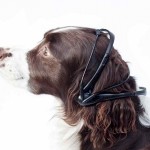
Taking control over what we do in our dreams has been a sought after thing since times immemorial, but the Kokoon EEG headphones might enable us to do just that.
Tim Santos, the mechanical engineer and product designer who developed Kokoon, seems to think that headphones that analyze your brainwaves through electroencephalography are a far better way to induce lucid dreams than by using a headband with a similar function. The reason behind that might be the fact that Kokoon actually makes use of sound for relaxing you, and that’s just the first stage of the process.
During the second stage, audio levels adjust as you fall asleep, to make sure that you do not perceive the generated sounds as noise. That would definitely defeat the entire purpose of the device. During the next stage, Kokoon generates white noise to promote deep sleep. The EEG headphones will wake you up at the optimum point in the sleep cycle, to ensure that you are rested and won’t feel groggy the whole day. The companion app provides plenty of sleep insights, with graphical representations of every sleep stage. That will surely help users better understand the effectiveness of the device.
Kokoon is currently the subject of a crowdfunding campaign on Kickstarter, and at the time of writing, the project had already raised $342,944 – 3.4 times more than the $100K funding goal. Pledging $139 as an early bird, or $159 as a regular backer, will secure a pair of Kokoon EEG headphones for lucid dreaming for you. Orders will be shipped in February 2016, provided that everything goes to plan by then.
People eager to enter the world of lucid dreaming should probably be mindful of their wallets, before investing on something that might never materialize. Back in November 2013, LUCI, an “advanced lucid dreaming inducer” in the form of a headband, was featured on Kickstarter, where the project raised more than 9 times the funding goal before the Internet proved that it was all a scam and the crowdfunding platform shut down the project. Kokoon’s partnership with Onkyo, a fairly popular Japanese electronics manufacturer, suggests that this product has greater chances of becoming a reality, though, and overall better chances of being a functional product. Seeing how successful their campaign is, I can’t wait to see if they’ll introduce any stretch goals.
Be social! Follow Walyou on Facebook and Twitter, and read more related stories about the iWinks Aurora lucid dreaming headband, or Voyce, the fitness tracker for dogs.
 How many videos of animals “talking” have you watched on YouTube? Don’t you wish those were real? Well, it looks …
How many videos of animals “talking” have you watched on YouTube? Don’t you wish those were real? Well, it looks …
